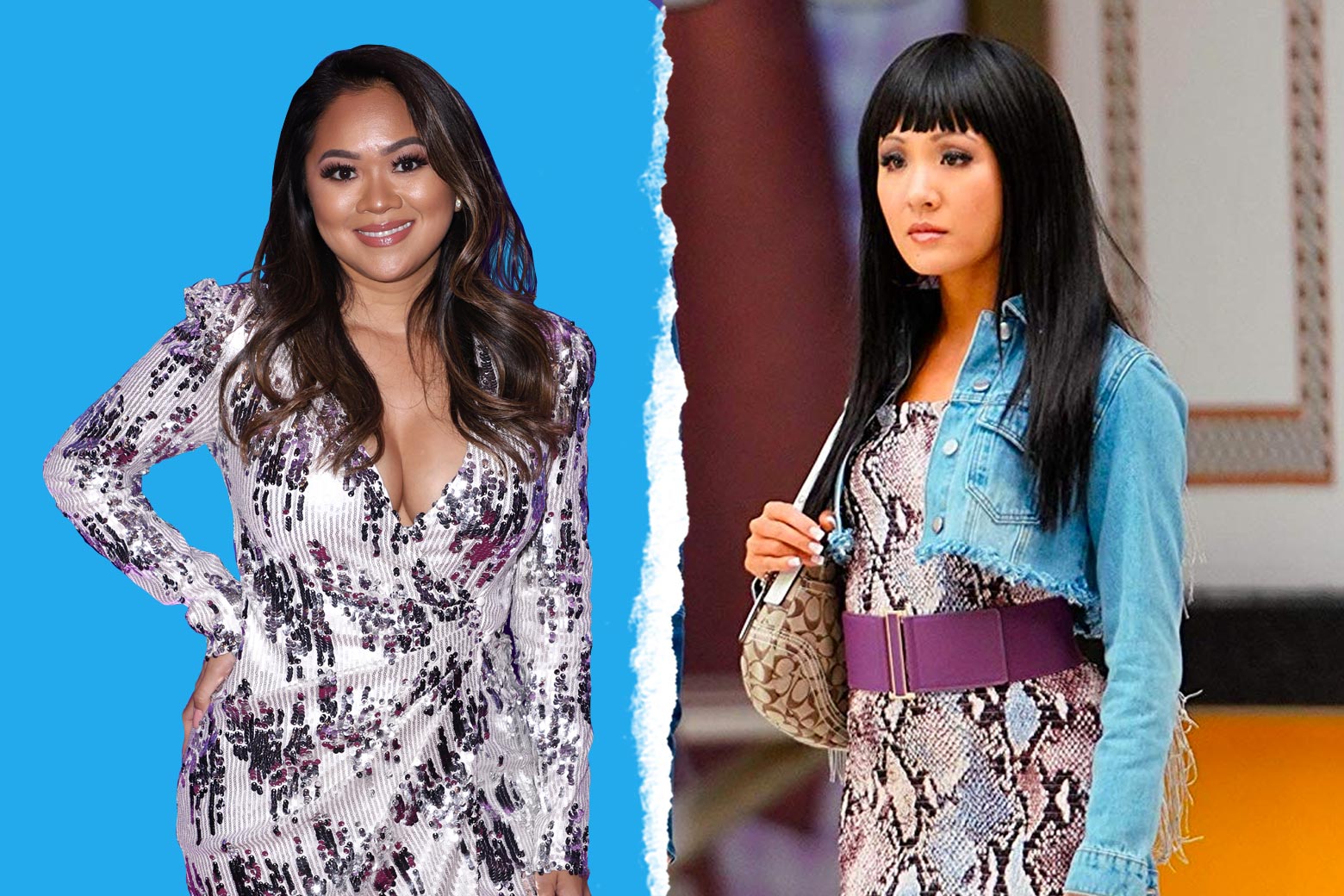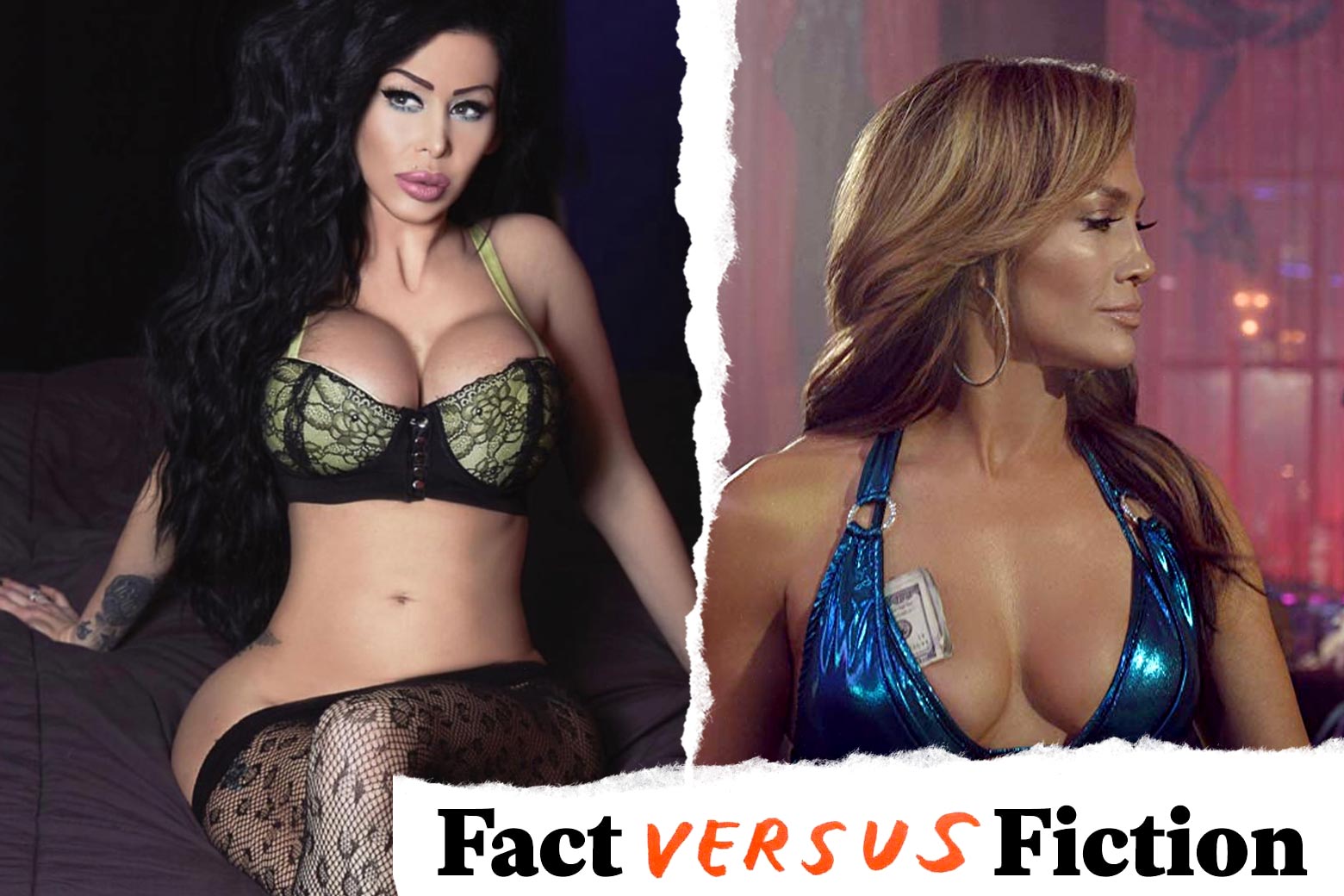Hustlers, the new movie from writer-director Lorene Scafaria, tells the rags-to-riches-to-prison story of four New York City strippers. Faced with the havoc wreaked by the 2008 recession on the sex industry, the winsome foursome decides to take matters into their own hands in a modern, quasi-feminist retelling of the classic “steal from the rich” tale. Except instead of giving to the poor, these women are looking only to give to themselves. The crew’s fearless leaders are single mother and veteran dancer Ramona Vega, played by an incandescent Jennifer Lopez, and Destiny (Constance Wu), who tells their story to journalist Elizabeth (Julia Stiles).
Elizabeth is based on New York magazine’s Jessica Pressler, and the movie itself is based on Pressler’s 2015 article “The Hustlers at Scores.” As the preceding suggests, many of the names are changed, both of the innocent and of the not-so-innocent, but the movie is still largely faithful to the story, while inventing some details for laughs and others to make the criminal protagonists more sympathetic. Below, we break it all down.
Dorothy (Constance Wu) vs. Roselyn Keo

We first meet Destiny in 2007, when she’s still going by Dorothy and has only recently started dancing in the big city to help supplement her grandmother’s income. Her name in Hustlers isn’t real, but her backstory is largely faithful to that of Roselyn Keo, the woman whom Destiny’s character is based on and the main character in Pressler’s story.
The child of Cambodian immigrants, Keo was raised by her elderly grandparents in Rockland County after her parents took off for Atlantic City when she was young. Keo told Pressler that she dropped out of school at 17 so she could start working full time at a diner. It was there that she was discovered by the manager of a nearby gentlemen’s club who “dropped a $20 tip on a $20 check, gave her uniform a long up-and-down look, and suggested she come by if she was interested in making more money.” That bit is left out of Hustlers, and instead we’re introduced to Destiny when she makes the jump to New York City in 2007, the same year that Keo linked up with the Bronx-born stripper that Ramona Vega is based off, Samantha Barbash, who also goes by the name Samantha Foxx. In real life, the club was called Scores, and in the movie, it’s called Moves, but the club is portrayed in the movie much as it’s described in the article.
Some details are changed or invented in order to make Destiny appear more sympathetic, at least at first. For example, while the movie introduces her as dancing in order to support her grandmother, who becomes a significant character, Keo’s motivations weren’t so wholesome. In real life, according to a follow-up article in New York magazine, Keo’s grandmother died when she was 16.
Perhaps most importantly, one of Destiny’s regular customers and easiest marks comments on how neat her handwriting is when he catches her studying before the club opens, going so far as to say that it could be a font. That is, improbably, accurate. “It was just unbelievable how organized she was,” one white-collar patron told Pressler. “Her penmanship was perfect.”
Ramona Vega (Jennifer Lopez) vs. Samantha Barbash
Just like Ramona, Samantha Barbash was undoubtedly the HBIC when she and Keo met. According to Pressler, “By the time Rosie met her, Samantha was in her 30s—ancient by stripper standards—but she’d maintained her supremacy in part by cultivating younger dancers.” Barbash, like Vega, would often introduce her regulars, mostly Wall Street guys, to new girls she took under her wing.
Hustlers stays relatively faithful to Barbash’s backstory, although, as with Keo, the movie at first makes her more sympathetic by presenting her as motivated by providing for her family. Ramona’s daughter, Juliet, appears often throughout the film and seems to be Ramona’s entire motivation for returning to stripping after the 2008 financial crisis, setting in motion her turn to crime. Though Barbash, too, was a single mother, her children are never named in Pressler’s account.
The Recession and the Return to Stripping
As in real life, the 2008 financial crisis is what launches Ramona and Destiny on the road to disaster. Before that, though, Destiny leaves the club scene to try to make it work with a man who looks like a discarded member of Panic! at the Disco and ends up having a baby, only for the relationship to falter. She returns to her list of regular marks, including the calligraphy connoisseur, and when he asks about her baby crying in the background, she tells him it’s a friend’s. Unfortunately for Destiny, the font fiend is now married, and she has to give retail a go before deciding to return to a vastly different club scene populated by Russians who would give blow jobs for $300. It’s just after she succumbs to the pressure and gives a customer a hand job for what she thinks are three $100 bills but end up being three twenties that she reunites with Ramona, who’s running a new scheme.
Nearly all of this is lifted directly from the article, from the lying about the crying baby to the Russian takeover to the exact price Keo says they charged for oral sex. And though we have zero clue whether Keo’s on-again, off-again fiancé does, in fact, look like a pop-punk star, the couple had indeed “hit a rough patch” just as the economy entered an 18-month tailspin. The hand job scene, however, seems to be an invention for the film.
The Hustle
After the reunion, we’re introduced to Ramona’s—and eventually Destiny’s—new scheme. It starts with “fishing.” The premise is simple. First, find a rich man to ply with liquor and female attention. Once properly intoxicated, run up his credit card at the club where Ramona has negotiated a hefty percentage of whatever her mark spends. There’s only one problem: The mark is sometimes too drunk or too square to play the game. Enter the secret formula: a sprinkle of MDMA and ketamine that Destiny ends up refining in a scene that finds the two women sampling their secret formula and waking up on the kitchen floor.
Again, this is all mostly true in function, if not in form. The fishing expeditions are largely accurate, though the choice to begin to start enlisting tried and true clients from the good old days is framed as one made by Destiny. In reality, according to Pressler, Barbash always had multiple streams of revenue. She “would go down the list of client phone numbers she’d accrued over the years” and “send them a sexy text and a photograph and see if they were up for a night out.” Just like Vega in Hustlers, she would often send a photo of other women in her crew (played by Lili Reinhart and Keke Palmer in the movie). A mixture of MDMA and ketamine is indeed what Barbash used, though she seems to have refined it before Keo joined the operation, meaning that Pressler’s article contains no scene of them passing out in front of the stove.
That’s not to say that Keo was merely a foot soldier in the scam—she’s actually much more ruthless than the movie gives her credit for. In Hustlers, Destiny says, “Ramona was always in charge.” In reality, according to Pressler, Keo was the business mastermind who streamlined the operation and the one who would liaise with credit card companies. “I was on the phone with American Express half the time verifying his last four digits of Social, his mother’s maiden name, his last purchases, and their name, and their location, and how much was being charged. … I did it right in front of them,” she told Pressler.
The Downfall
In the movie, the tension begins with Ramona’s penchant for recruiting untrustworthy “strays,” including drug addicts, and her lack of business sense. Destiny recommends not maxing out a client’s account so that he’d come back; Ramona runs the card up to its limit of $50,000. (This dollar amount is straight from the article.) This causes the crew to quickly burn through their regulars and take bigger risks on strangers, leading to one memorable scene where Destiny has to drive a naked man to the hospital after he comes up short while trying to jump from his house over his deck and into his pool.
While the client who believed he could fly seems to be a fabrication, the breakdown in the operation is pretty true to Pressler’s account. While there’s no evidence that either of the two additional women arrested with Keo and Barbash had any issue with chronic nervous vomiting specifically, Barbash did have a soft spot for “ex-strippers with problems,” one of whom apparently disclosed on a phone call that she and a crew of strippers had fleeced a disgruntled client. The recording of that call, as accurately presented in Hustlers, is what ultimately leads to the crew’s downfall. And while the tape was the smoking gun, it was the testimony of two men that sealed the case. One was a New Jersey cardiologist with a $135,000 strip club bill he refused to pay (as in the movie, this story really did become a sensation in the New York tabloids) and the other a single father in finance with an autistic child. In Hustlers, both of those stories are largely rendered accurately, though the cardiologist becomes an architect, and the single father with an autistic child has lost his house in a fire, rather than, as in real life, a hurricane.
When the women are all picked up, Destiny ends up taking a plea deal so she can avoid jail time and raise her daughter. Ramona, while angry, understands, and when the two part, they may not be friends, but there seems to be mutual understanding. In reality, Barbash and Keo haven’t spoken since, and while Keo really did tell Pressler that she and Barbash “were like Kobe and Shaq,” New York magazine’s follow-up suggests they were never exactly best friends: “They just worked well together on something which happened to be illegal.”
Usher
The movie closes with a flashback to when the women were still on top, thrilled to receive a surprise visit at the club from Usher. According to Scafaria, she “wrote this cameo into the script years ago.” Sadly, it appears to be her invention.
Read the original story that inspired Hustlers at Vulture.
